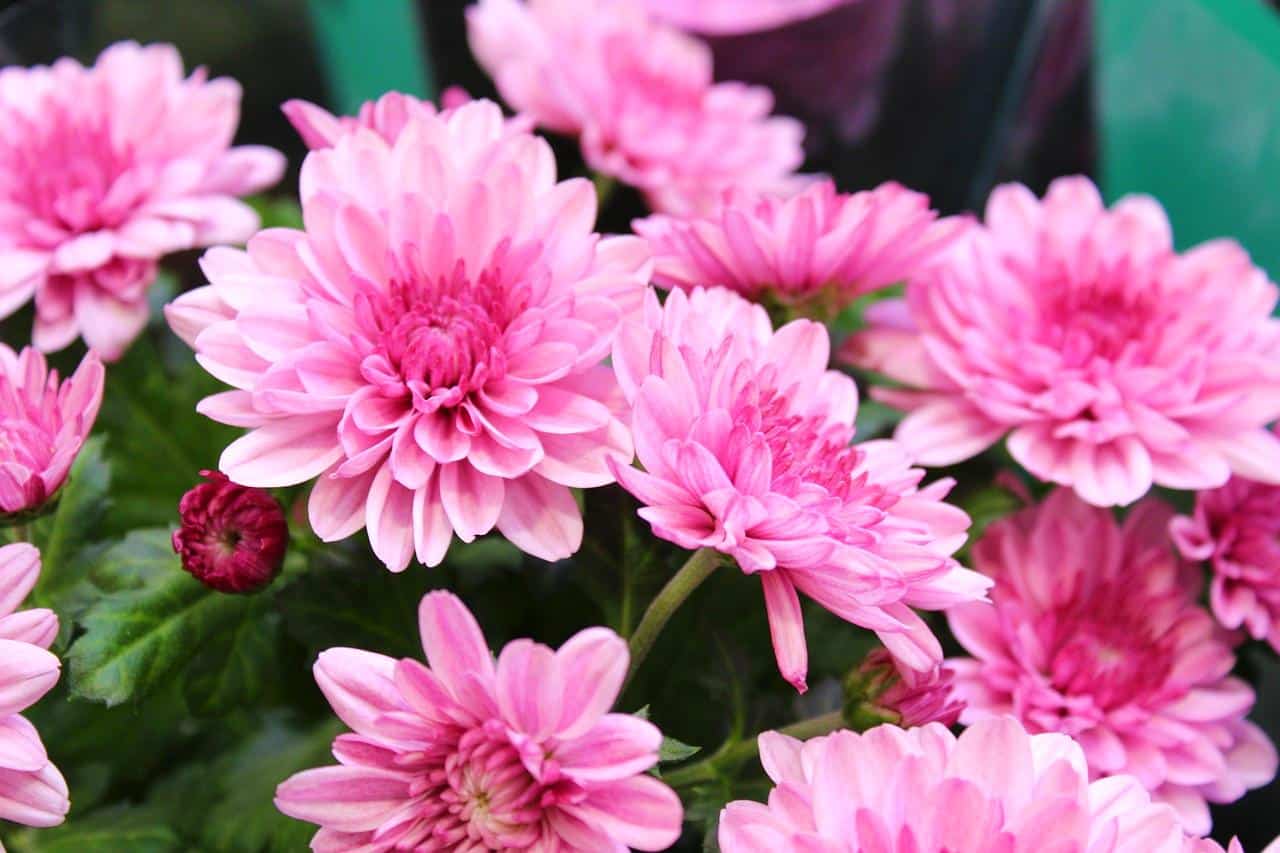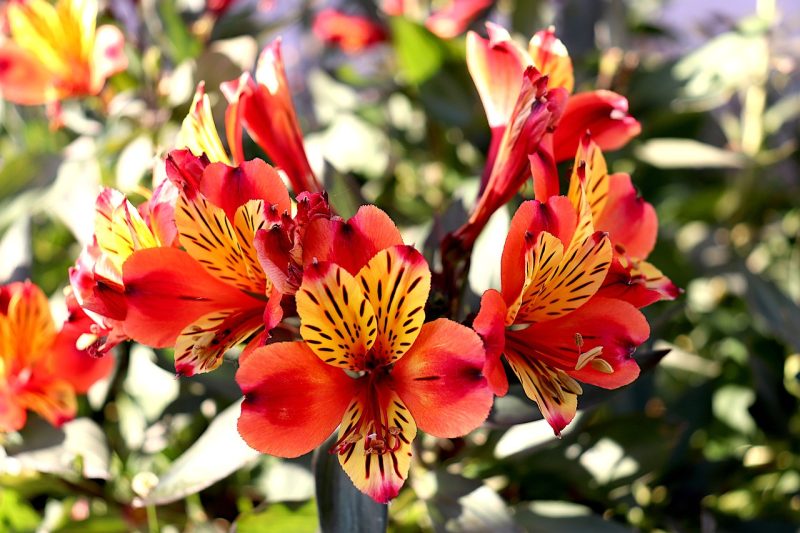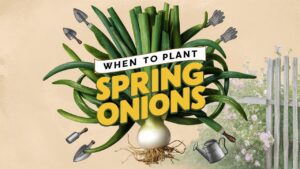As the warmth of summer fades, many gardeners might feel the urge to retreat and prepare for the long winter ahead. However, fall and winter bring forth a unique array of blossoms that invite vibrancy even into the cooler months.
Fall Blooms (September to November)
Asters
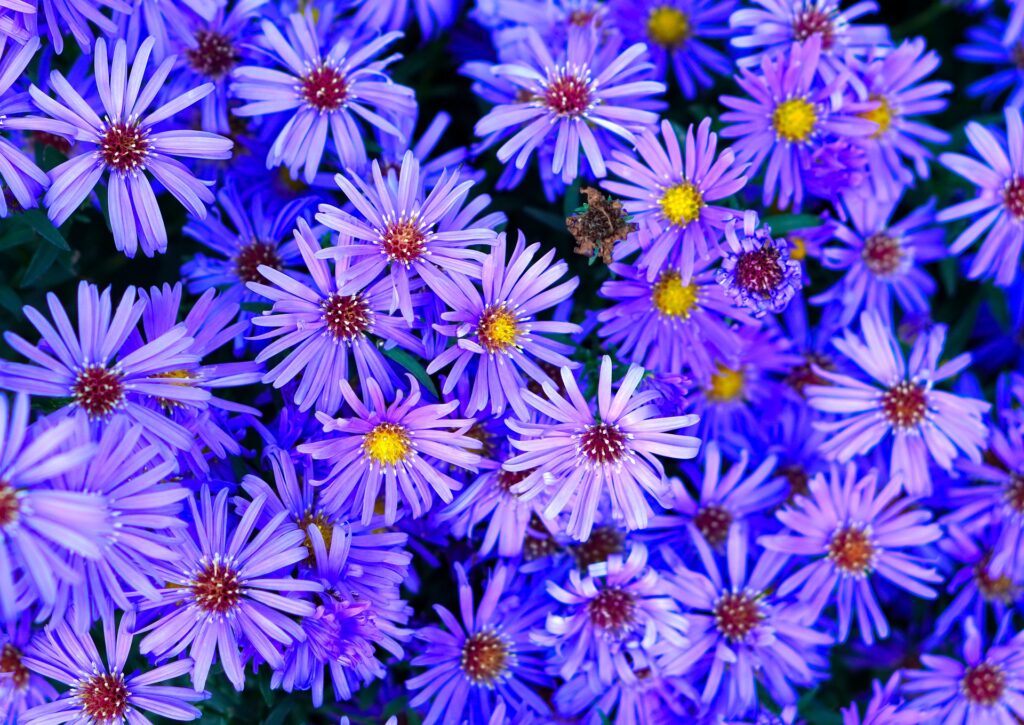
Asters are heralds of fall, often known for their star-shaped flowers that come in an array of colors, including blues, purples, and whites. Blooming from September to October, these perennials thrive in full sun and well-drained soil. Asters are not only beautiful but also serve as significant nectar sources for pollinators preparing for winter. Their clusters attract butterflies and bees, providing essential sustenance as these creatures prepare for the colder months. When planting asters, consider varieties such as New England aster or heavenly blue aster for a spectacular late-season display.
Chrysanthemums
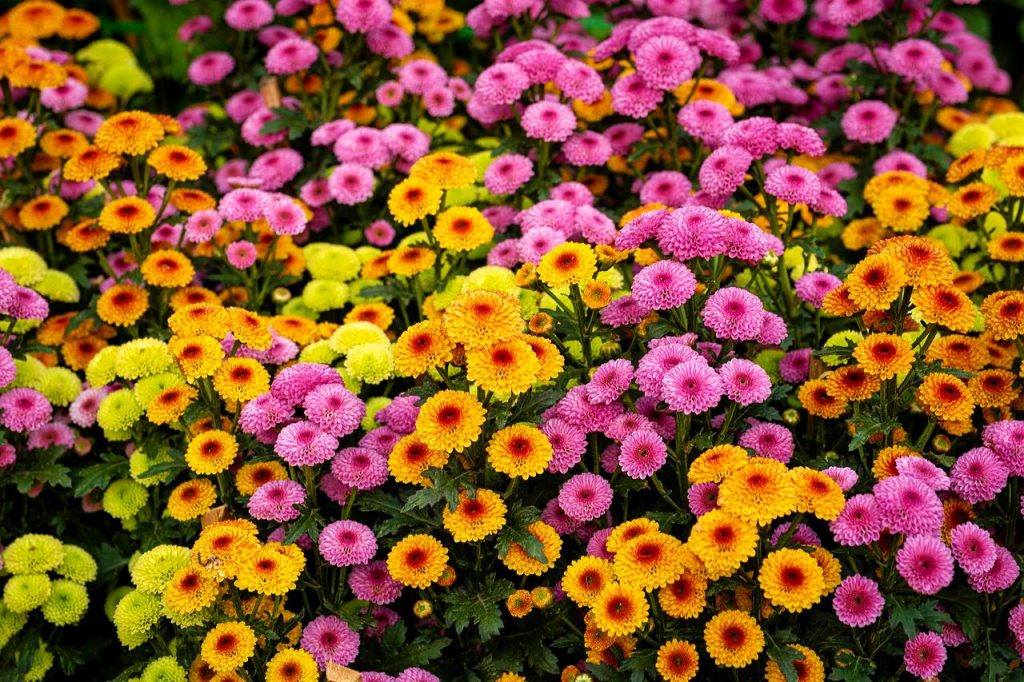
Often referred to simply as “mums,” chrysanthemums boast a wide variety of shapes, sizes, and colors, making them a staple for fall gardens. Their vibrant blooms can last well into November, creating a stunning warm palette against the backdrop of fading foliage. Mums thrive in full sun but require good drainage to prevent root rot. In addition to their visual appeal, many varieties are hardy and can be perennial in suitable climates, allowing for a prolonged display year after year. Combining different types of chrysanthemums can create a multi-layered effect, perfect for adding depth to your fall landscape.
Sedum
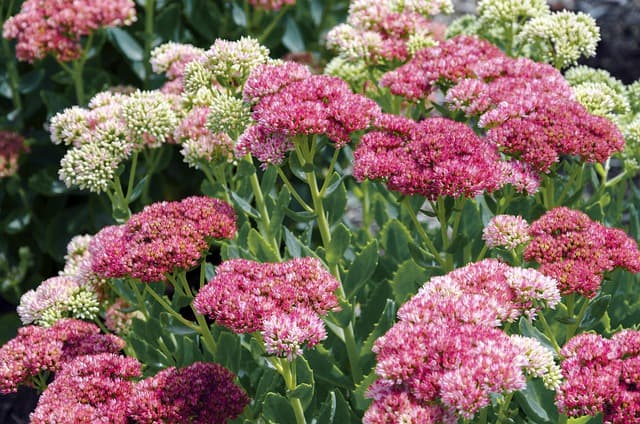
Sedum, commonly known as stonecrop, is a succulent that flourishes in late summer through fall. Its fleshy leaves store water, making it remarkably drought-tolerant and a perfect fit for low-maintenance gardens. As temperatures drop, sedum’s yellow and pink hues intensify, creating a beautiful contrast against the browns and golds of autumn. These hardy plants attract pollinators late in the season, while their sturdy stems provide winter interest as well. Consider ‘Autumn Joy’ sedum, known for its striking late-season flowers that stand tall and proud even after frost.
Alstroemeria
Alstroemeria, or Peruvian lilies, surprise many with their capacity to bloom through the fall and into early winter. Renowned for their vibrant, varied colors and petal patterns, these long-lasting flowers flourish in sunny spots with well-drained soil. Alstroemeria is unique for its extended blooming seasons; with proper care, they can flower again in late winter. Furthermore, when cut for bouquets, these flowers last significantly longer than many others, making them a popular choice among florists.
Pansies

Pansies are one of the most beloved fall flowers, noted for their friendly faces and vibrant colors. As they thrive in cooler temperatures, these annuals can withstand frosts and continue to bloom from September through the first snowfall. The sheer variety of colors—from deep purples to fiery oranges—allows gardeners to play with color schemes and design intricately patterned flower beds. Pansies, known for their delicate petals, can also be used in edible landscaping, adding both beauty and flavor to salads and garnishes.
Cyclamen
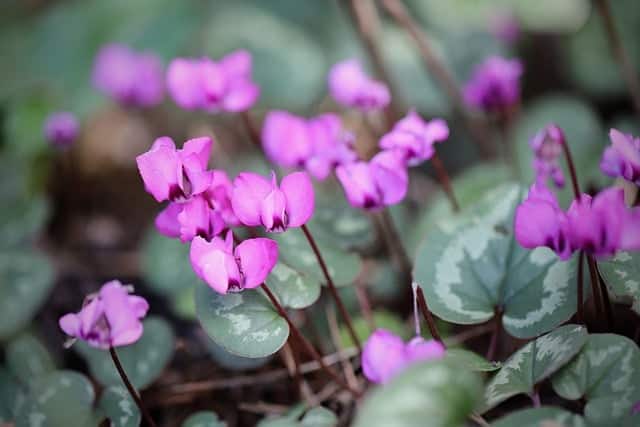
Cyclamen are enchanting perennials that can create a truly magical autumn atmosphere in shaded areas. Their upswept petals come in shades of pink, white, and lavender, blooming from late summer through winter. Unlike many other fall flowers, cyclamen thrive in cooler temperatures, making them perfect for shady spots in gardens or containers. Moreover, their heart-shaped leaves are often ornamental themselves, providing interest long after the blooms have faded. These flowers are not just beautiful; they also signal a transition from the vibrant summer to the serene beauty of winter.
Salvias

Salvias are resilient perennial plants that often extend their blooming period into the cooler months. These flowers thrive in sunny locations and are celebrated not just for their blooms but also for their aromatic foliage. Various types of salvia – such as ‘Autumn Sage’ – see their flowers transition into rich shades of red, purple, and pink come fall. Salvias are known to attract hummingbirds and butterflies, contributing to biodiversity in the garden during a time when many other flowers have faded. With proper deadheading, salvias can produce blooms that persist until hard frost, ensuring maximum garden impact.
Dahlia
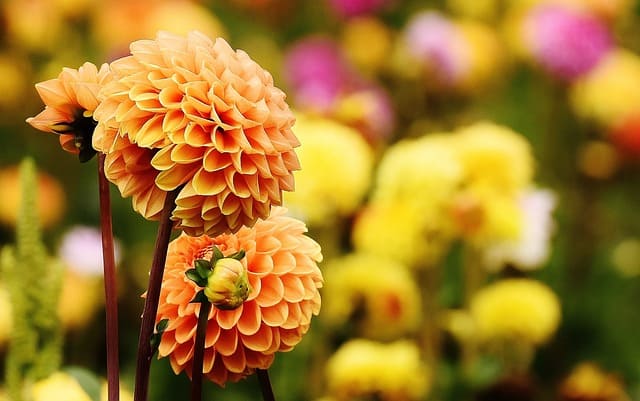
While typically associated with summer’s grandeur, some Dahlia varieties extend their blooms into the cooler days of fall. Requiring full sun and well-drained soil, dahlias are prized for their large, intricate blooms that come in an astonishing variety of colors and shapes. Their vibrant display can create striking arrangements in any fall garden. To ensure that they thrive later into the season, be sure to provide adequate water during dry spells, and consider deadheading spent flowers to promote extended blooming. Some late-blooming varieties, such as ‘Cafe au Lait,’ are particularly favored for their elegant, soft-hued petals that bring sophistication to autumn landscapes.
Zinnias
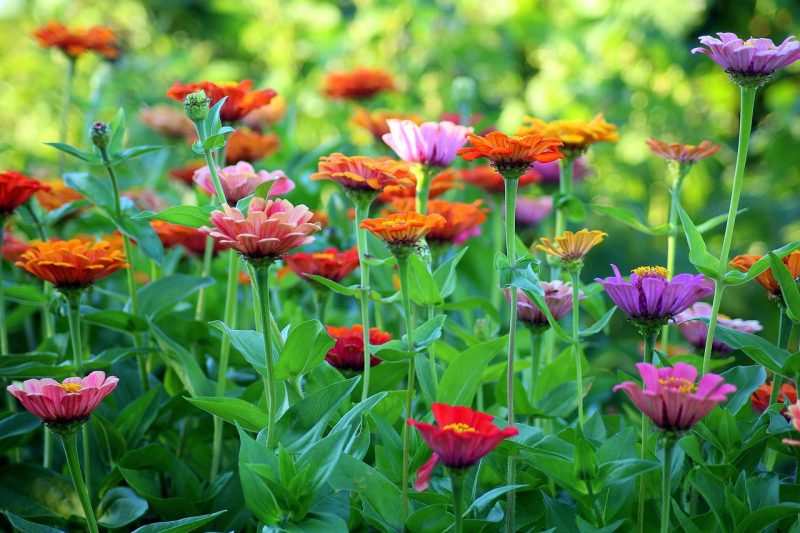
Zinnias, beloved for their cheerful blooms and easy care, add a burst of color to late summer and early fall gardens. With varieties that can endure cooler temperatures, zinnias can continue to flourish into October. These annuals come in a broad spectrum of colors, with single and double-flower forms that provide texture and depth in flower beds. They are not just visually appealing; zinnias are also excellent for attracting butterflies and other beneficial insects, making them a vital addition to any garden ecosystem. For gardeners looking to enjoy last-minute blooms before winter, zinnias are a reliable choice.
Winter Blooms (December to February)
Poinsettias
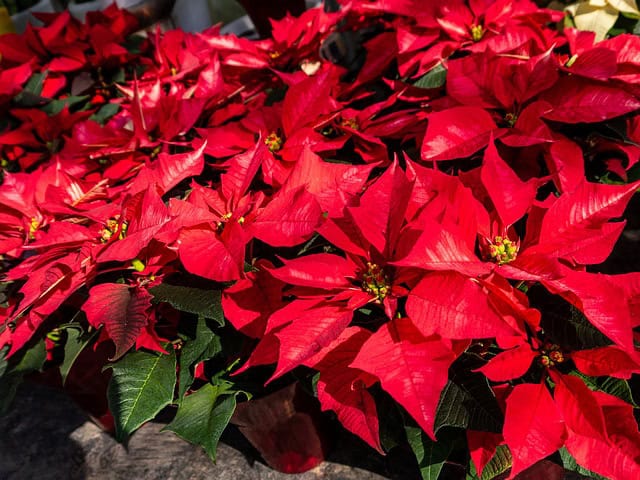
A holiday favorite, poinsettias are often synonymous with winter festivities. These plants thrive indoors and come in a variety of vibrant colors, including traditional red, pink, and white. Poinsettias bloom in response to shorter daylight hours, making their appearance just in time for the holidays. To successfully care for these beauties, keep them in a warm, draft-free location with bright indirect light, and water when the soil feels dry. Beyond the festive season, they can thrive in outdoor gardens in warmer climates, offering luscious foliage and blooms through spring.
Amaryllis
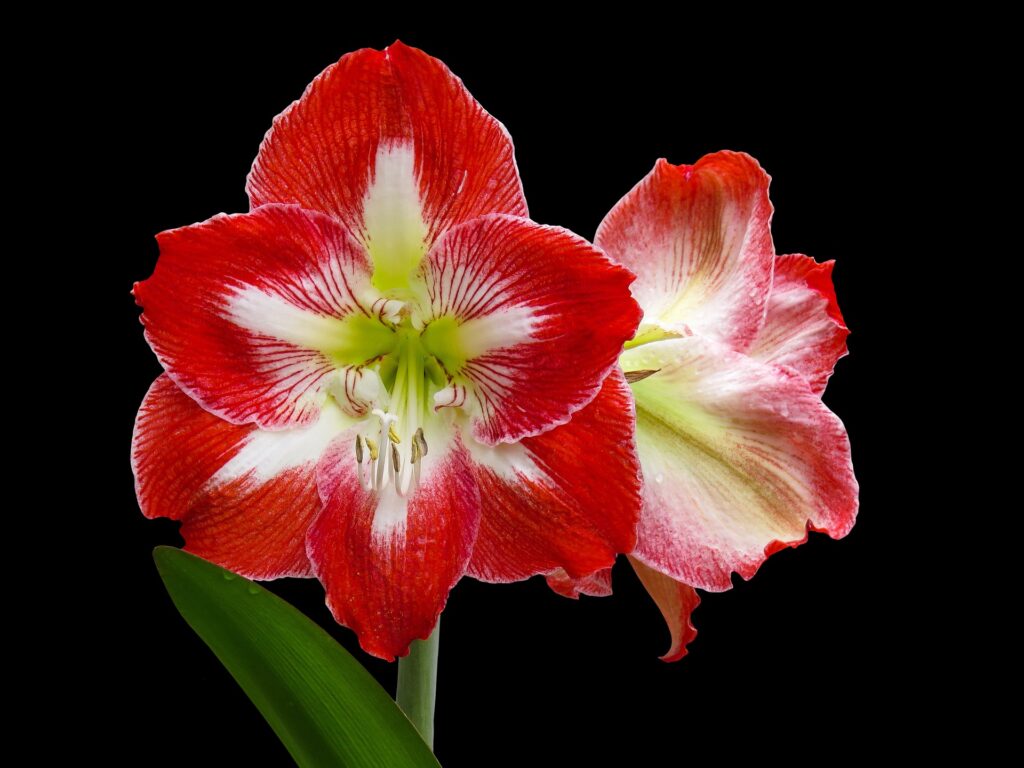
Amaryllis bulbs are renowned for producing large, dramatic flowers that can brighten any indoor space during winter. Requiring minimal care, these bulbous plants thrive on a schedule of watering and warmth, quickly transforming from dormant bulbs into magnificent floral displays. With varieties that boast colors like deep red, pink, and white, amaryllis can bloom in cycles, allowing for staggered enjoyment from December through February. Planting multiple bulbs at different times creates a continual show, turning your home into a garden oasis amidst the winter chill.
Christmas Cactus
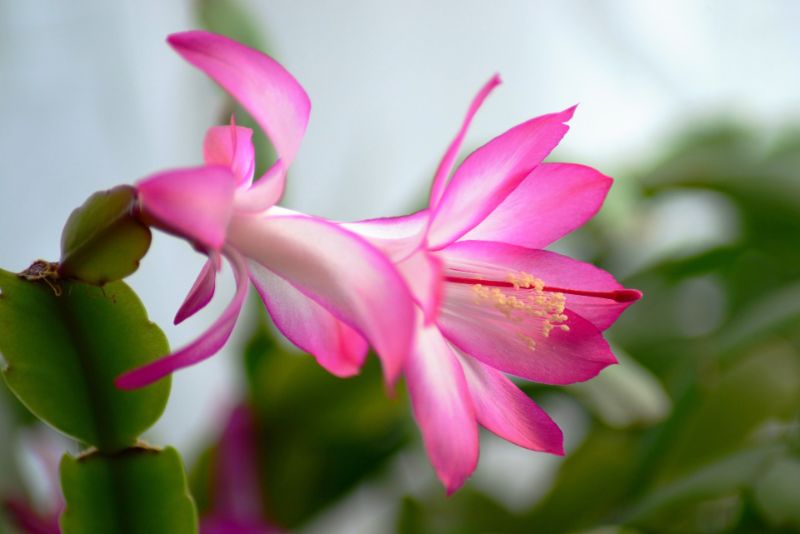
The Christmas cactus (Schlumbergera) is a unique winter-blooming succulent known for its vibrant, tubular flowers that can range in color from deep pink to white or red. Unlike traditional cacti, the Christmas cactus thrives in more humid conditions and prefers indirect sunlight. When cared for properly, this plant will reward you with striking blooms that often coincide with holiday celebrations. To encourage flowering, it’s best to place the plant in a cooler room during the late fall. Once in bloom, allow the plant to dry out somewhat between waterings, striking a balance that promotes healthy growth.
Snapdragons
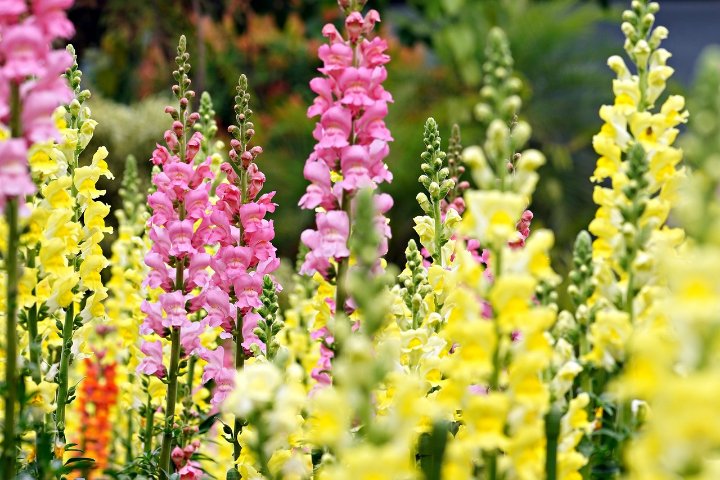
Though often associated with spring, snapdragons (Antirrhinum majus) can also flourish in winter gardens, especially in milder climates. These tall, elegant blooms provide vertical interest and come in a variety of colors, including yellow, pink, and white. They thrive when planted in sunny spots and can withstand light frosts, making them resilient performers in the garden throughout the winter. For those eager to have early spring flowers, planting snapdragon seeds in late fall can lead to a splendid show of color as early as February.
Camellias
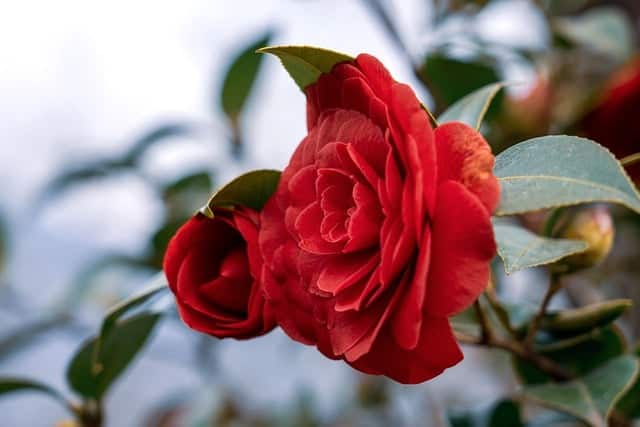
Camellias are among the most exquisite winter-blooming shrubs, known for their lush, rose-like flowers. Typically seen in shades of white, pink, and red, camellias bloom from late winter into early spring, heralding the approach of warmer weather. These plants prefer partial to full shade and thrive in well-draining, acidic soil. Their evergreen foliage adds year-round interest, making them a valuable addition to any garden. With proper pruning and care, camellias can become statement pieces, showcasing an elegant display of appropriate blooms right when we need them the most.
Hellebores
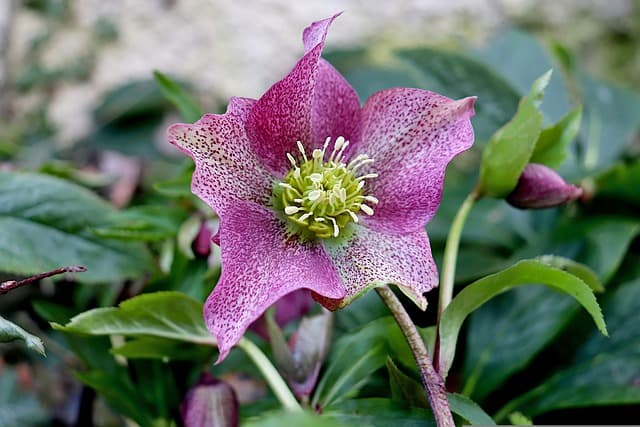
Hellebores, often referred to as “Christmas Roses,” are hardy perennials that can begin flowering even under the snow. Blooming as early as December, these remarkable plants boast elegant, nodding flowers in an array of colors, including white, pink, purple, and green. Hellebores thrive in shaded or partially shaded areas, making them ideal candidates for woodland gardens or borders that need a splash of early color. Their leathery, evergreen leaves provide year-round interest, while the flowers can last for several months, often peeking through the snow and adding a touch of grace to the winter landscape. Hellebores are also relatively low maintenance; once established, they require minimal care, making them perfect for gardeners looking for persistent winter beauty.
Evergreen Flowers (Year-Round)
Roses (Some Varieties)
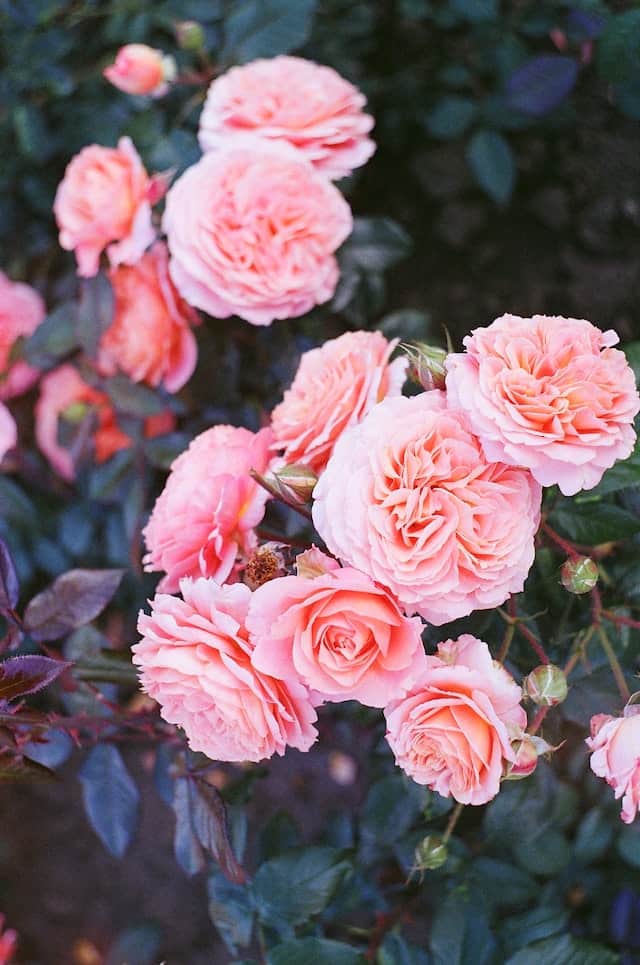
While roses are often celebrated for their spring and summer blooms, certain varieties exhibit remarkable resilience, allowing them to flower into the fall and, in some cases, through the winter. Hybrid tea roses, floribunda, and even some climbing types can produce sporadic blooms in milder winter climates. Varieties such as ‘Iceberg’ and ‘Knock Out’ are particularly noted for their continuous flowering capabilities, showcasing stunning petals against verdant foliage. These roses thrive best with regular pruning and care to promote healthy growth. Selecting varieties that are bred for hardiness ensures that you can enjoy their beauty even as colder weather sets in.
Carnations

Carnations have long been cherished for their ruffled blooms and pleasant fragrance. These versatile flowers can bloom for extended periods throughout the year, making them an excellent choice for any home or garden. Known for their durability, some carnations can even withstand light frosts, allowing them to remain a focal point in the garden as temperatures drop. Available in various colors, carnations can be used in fresh arrangements or dried to retain their beauty long after they bloom. When grown in well-drained soil and full sun, these flowers can thrive year-round, making them a reliable choice for winter gardening.
Orchids
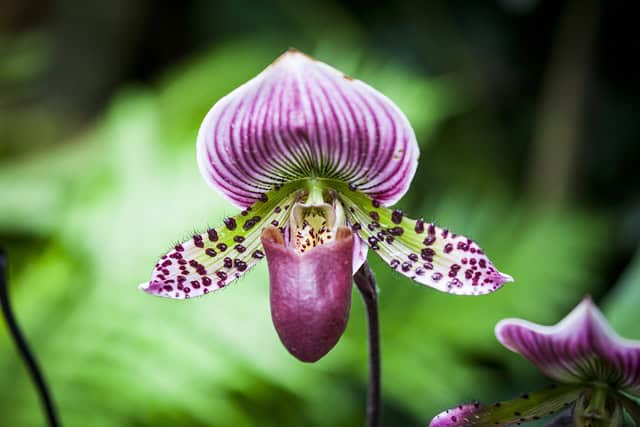
Orchids, often associated with tropical climates, are a diverse family of plants that can exhibit continuous blooms under the right conditions. Popular varieties like Phalaenopsis and Dendrobium can offer stunning flowers throughout the year, even in winter. Proper care is crucial for achieving blooms, with orchids requiring specific temperatures, humidity levels, and light conditions to flourish. These exquisite flowers come in various colors and shapes, making them a favorite for indoor gardening and floral arrangements. Their long-lasting blooms can bring sophistication and elegance to any space, brightening up the dreariest winter days.
African Violets
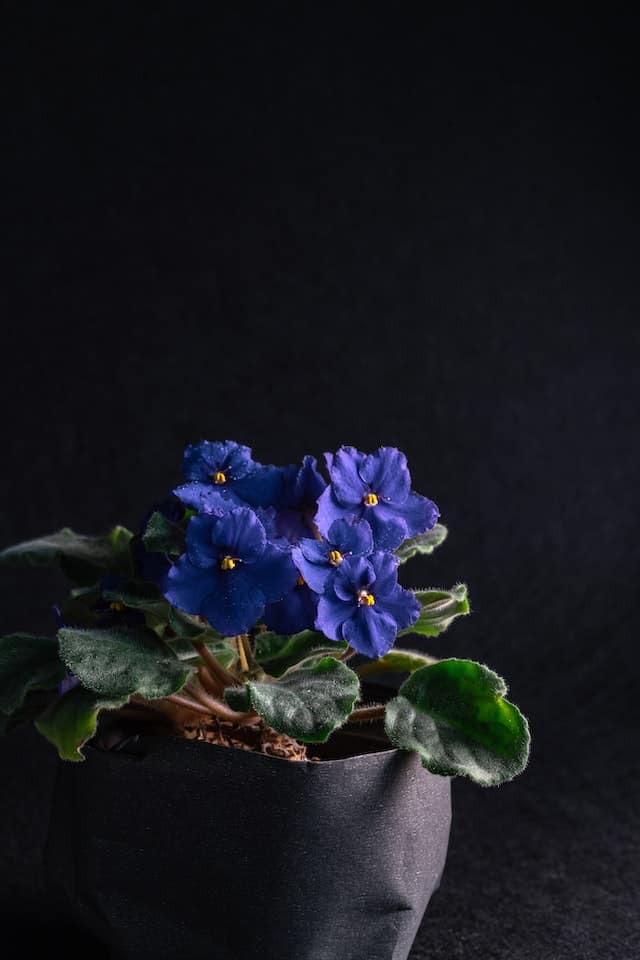
African violets are beloved houseplants renowned for their soft foliage and enchanting flowers that bloom in an impressive array of colors, including purples, blues, and whites. These perennial plants thrive indoors and can bloom profusely year-round with the right care. They prefer bright, indirect light and consistently moist soil, making them perfect for sunny windowsills. African violets are relatively easy to propagate, allowing gardeners to enjoy more plants from a single specimen. With their cheerful appearance, they provide an ideal pop of color and charm throughout the cold months.
Begonias
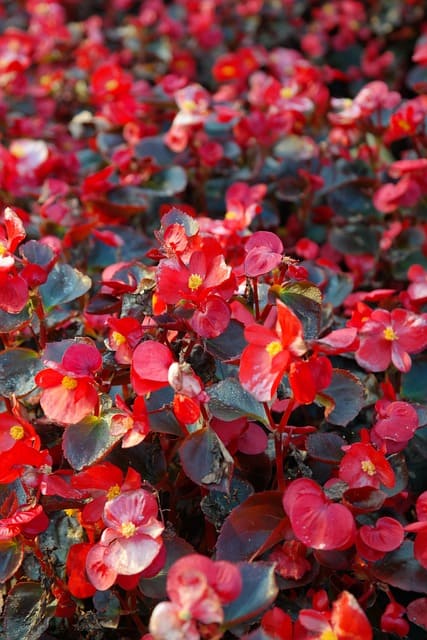
Begonias are known for their lush foliage and vibrant blooms, making them a delightful addition to any indoor or outdoor garden year-round. Certain types, such as the wax begonia and tuberous begonias, can produce beautiful flowers even during winter. These plants come in various leaf shapes and colors, from deep greens to rich burgundies, with blooms that can range from delicate pastels to vibrant reds and yellows. Begonias thrive in partial shade and moist, well-draining soil, making them suitable for indoor gardens and shaded outdoor areas. Their versatility and ability to bloom continuously ensure they remain a favorite among gardeners.
Region-Specific Winter Blooms: Southern US
Azaleas
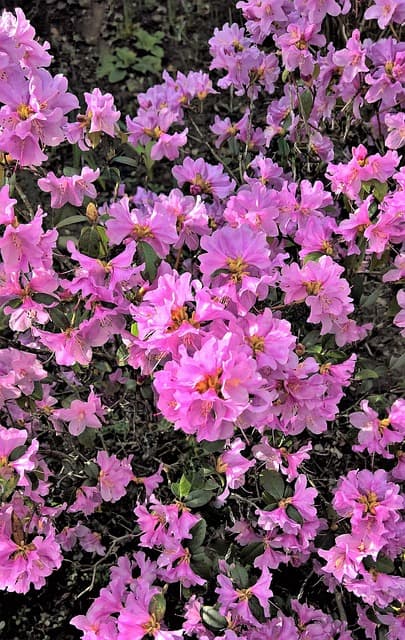
Azaleas are a spectacular sight in the Southern U.S., known for their stunning blooms that can brighten gardens during winter. Depending on the variety, these flowering shrubs can begin to show their colors as early as December. With a palette of vibrant shades, from bright pinks to whites and lavenders, azaleas create a beautiful contrast against the green evergreen foliage in the cooler months. The Southern climate, with its milder winters, allows for the continued growth and blooming of these plants. Azaleas prefer acidic, well-drained soil, and while they thrive in full sun, they benefit from partial shade, particularly in the afternoon, to protect them from the more intense sun of winter that can dry them out. With proper care and regular pruning, azaleas can become a show-stopping feature in your winter garden.
Camellias

Camellias are iconic winter blooms in the Southern U.S., renowned for their lush, intricate flowers and glossy, evergreen leaves. Unlike many other flowers that are dormant in winter, camellias burst into bloom from late fall through early spring, with their flowering period peaking in January and February. These resilient plants are available in various species, with the most popular being Camellia japonica and Camellia sasanqua. Their blooms appear in exquisite colors, ranging from pure white to vibrant pink and deep red, often resembling roses. Camellias thrive best in slightly acidic, well-drained soil, and they flourish in partial shade, making them ideal for planting under larger trees or as part of shrub borders. With their robust growth habit and beautiful flowers, camellias can represent the epitome of winter elegance in Southern gardens.
Gardenias
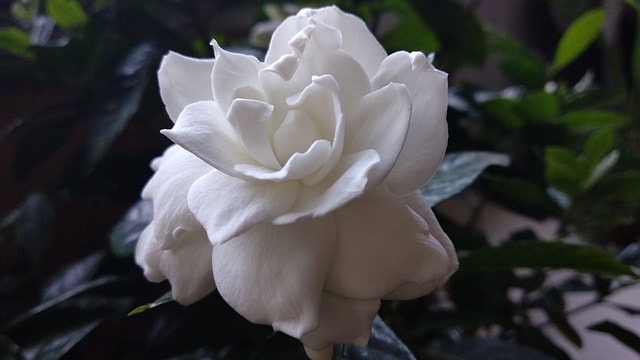
Gardenias are beloved for their intoxicating fragrance and striking white blooms, which can create a sensory delight in gardens during winter months. While typically associated with late spring and summer blooms, certain varieties of gardenias, particularly the ‘Magnolia Blossom’ and ‘Frost Proof,’ can produce flowers well into the winter when conditions are suitable. Their sweet aroma fills the air, making them a coveted choice for both ornamental gardens and indoor arrangements. Gardenias thrive in warm, humid conditions and prefer well-drained, acidic soil with plenty of organic matter. To help them flower robustly, gardeners should ensure they have adequate sunshine while providing protection from harsh winds and freezing temperatures. With proper care, gardenias can add a sumptuous scent and beautiful aesthetic to the winter landscape.
Region-Specific Winter Blooms: West Coast US
California Poppies
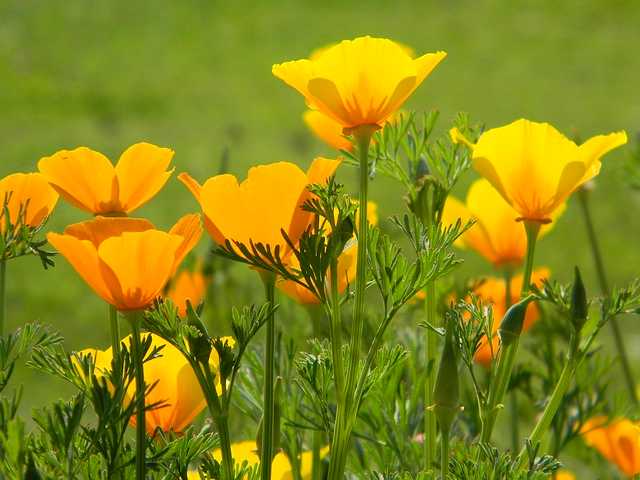
Though typically known as a springtime superstar, California poppies (Eschscholzia californica) can surprise with their ability to bloom in late fall and early winter in mild climates. These cheerful flowers are renowned for their bright orange hue that can light up even the dreariest of winter days. In areas of Southern California, it’s not uncommon for poppies to blossom early, especially with winter rains providing the moisture they need. As drought-tolerant plants, they thrive in well-drained soil and sunny locations, making them ideal for low-maintenance gardens. Furthermore, their ability to self-seed means that once established, California poppies can return year after year, creating a stunning natural display with minimal effort.
Lupines
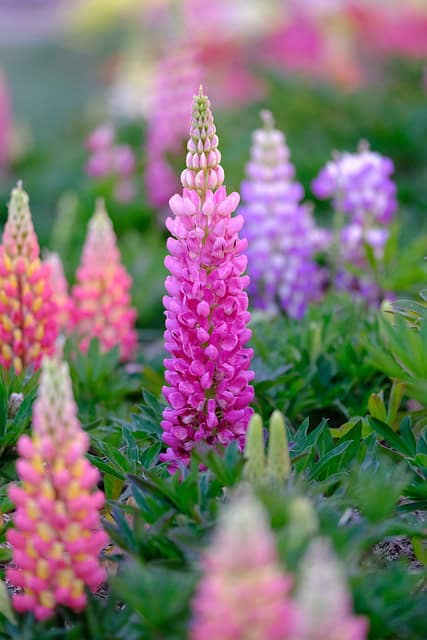
Lupines are another delightful flower that showcases their beauty during the cooler months on the West Coast, particularly in California. Known for their tall spires and vibrant blue, purple, or yellow blossoms, lupines add height and a pop of color to winter gardens. While they are more commonly recognized for their spring blooms, in coastal areas with mild winters, some varieties can start blooming as early as late fall. Lupines thrive in well-drained soils and prefer sunny locations, making them excellent companions for other drought-tolerant species. Beyond their beauty, lupines are also beneficial to the soil, as they are leguminous plants that help fix nitrogen, enriching their growing environment.
Sweet Alyssum
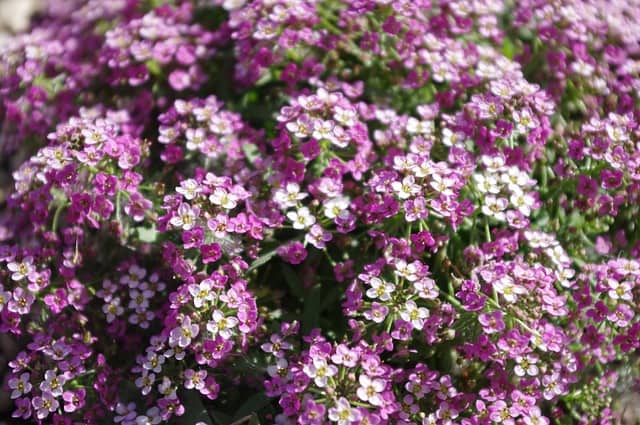
Sweet alyssum (Lobularia maritima) is a charming and aromatic flower well-suited for winter gardens along the West Coast. Known for its dense clusters of tiny blooms and sweet fragrance, this low-growing annual can provide vibrant ground cover in shades of white, pink, and purple. In mild winter climates, sweet alyssum can bloom continuously from fall through spring, thriving in various conditions, including containers, borders, and hanging baskets. Their ability to attract beneficial pollinators, like bees and butterflies, makes them a valuable addition to any winter garden. Sweet alyssum also performs well in cooler weather and is notably tolerant of frost, enhancing its versatility for West Coast gardeners.
Region-Specific Winter Blooms: Northern US
Snowdrops
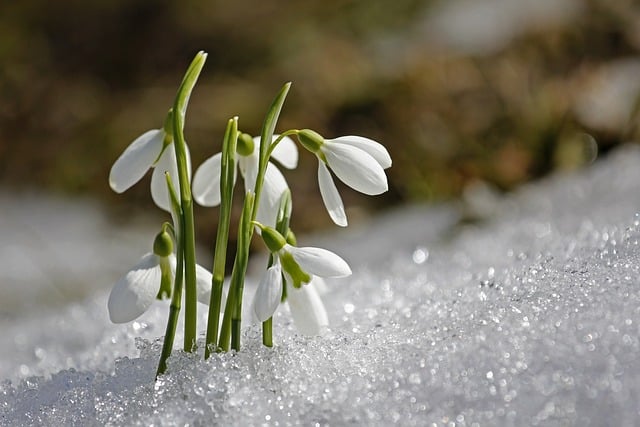
Snowdrops (Galanthus nivalis) are often heralded as the first sign of spring, but in many Northern gardens, they emerge from the ground even before winter fully departs. Their delicate, nodding white flowers are often visible peeking through the snow in late winter, making them a symbol of hope and renewal. Snowdrops thrive in well-drained soil and can often be found in wooded areas, where they create naturalized patches. These perennial bulbs prefer partial shade but can tolerate sunnier spots if the soil remains moist. Planting snowdrops in groups can create a striking visual effect, as their clusters contrast beautifully against the dark soil or white snow. For gardeners eager to welcome spring, snowdrops serve as a charming and low-maintenance floral option.
Winter Jasmine
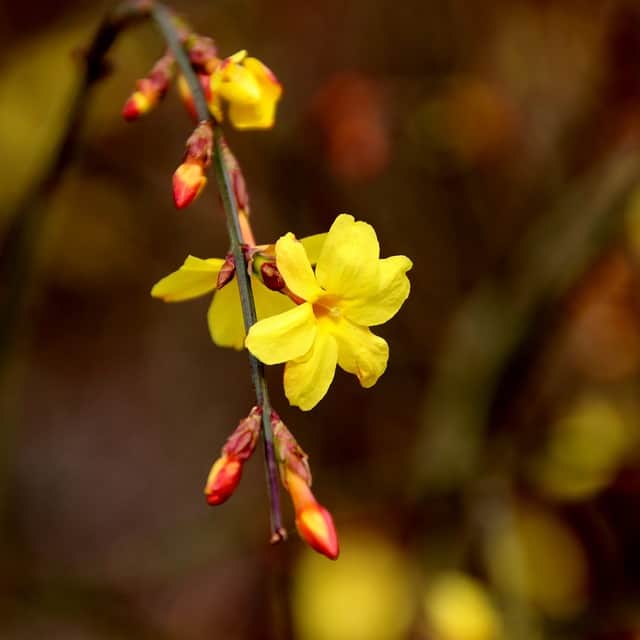
Winter jasmine (Jasminum nudiflorum) stands out as a resilient choice for Northern landscapes, offering vibrant yellow blooms that can appear as early as January. Unlike many flowering plants, winter jasmine blooms on bare stems before the leaves emerge, creating a stunning display of color in an otherwise monochrome winter setting. This deciduous shrub is adaptable, thriving in a variety of soil types, and prefers full sun to partial shade. Winter jasmine can also be used effectively in containers or as ground cover, making it versatile for different gardening styles. Its fragrant flowers not only enhance the winter garden aesthetic but also attract pollinators, including early bees, eagerly searching for sustenance in the chilly temperatures.
Hellebores
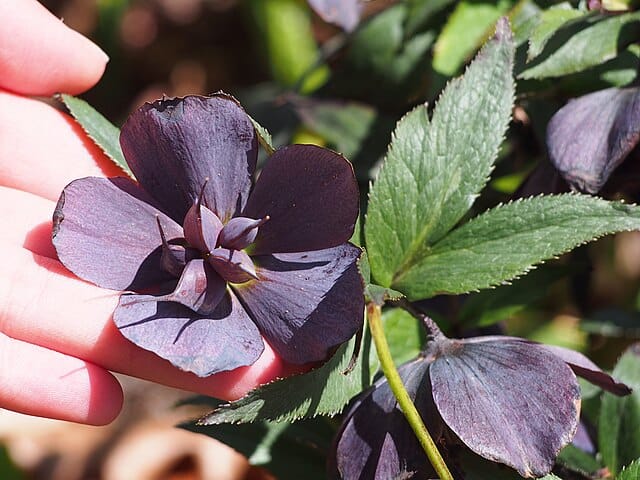
Commonly referred to as the “Christmas Rose” or “Lenten Rose,” hellebores (Helleborus spp.) are unique perennial flowers that bloom in late winter, often when the ground is still blanketed with snow. Their leathery, evergreen leaves and large, cup-shaped flowers come in shades of white, pink, purple, and even green, adding rich color and texture to the winter garden. Hellebores are shade-loving plants that prefer humus-rich, well-drained soil, making them ideal for woodland gardens or shady borders. Though they can tolerate colder conditions, providing protection from harsh winds and direct sunlight can enhance their bloom. One of the most appealing aspects of hellebores is their longevity; with the right care, they can thrive for decades, consistently brightening up winter landscapes with their unique beauty, making them a must-have for Northern gardens.
Bulbs That Bloom in Fall and Winter
Tulips (Forced)
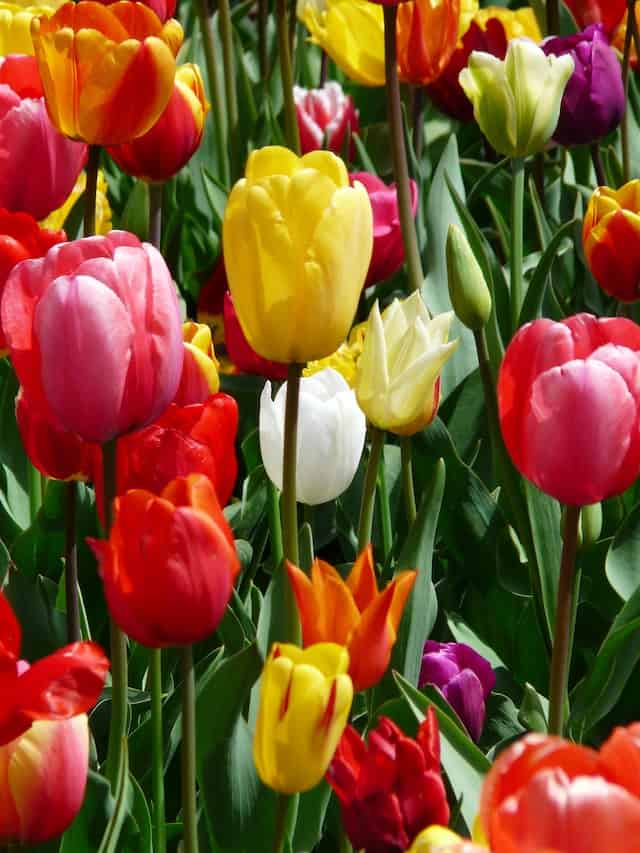
Tulips are among the most beloved spring flowers, but when forced, they can deliver a stunning floral display right in the heart of winter. By placing tulip bulbs in a controlled environment such as pots or containers and chilling them for a specific period, gardeners can mimic the natural winter conditions these bulbs require to initiate blooming. Typically, tulips need about 12-14 weeks of cold dormancy, followed by a warm period to blossom. Once out of dormancy and placed in a bright, sunny location, the tulips can bloom within a few weeks. The result is a burst of vibrant colors—ranging from sunny yellows and rich reds to soft pastels—even amidst the winter chill. Tulips thrive in well-drained soil and require regular watering, especially once they begin to bloom, ensuring a majestic display that can brighten any indoor or external space.
Daffodils (Forced)
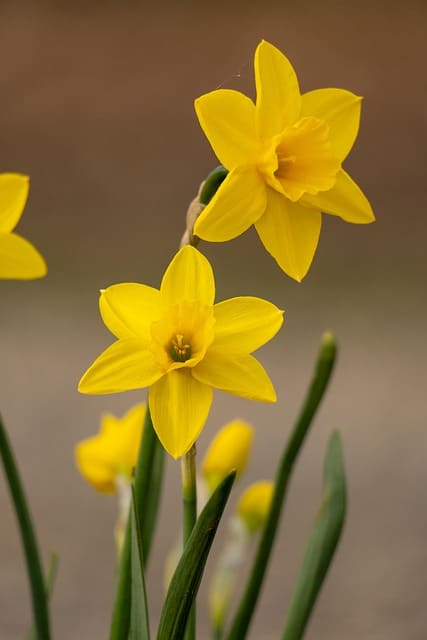
Daffodils, with their cheerful yellow and white blooms, are quintessential symbols of spring, yet they can also be effortlessly forced to bloom in the colder months. These bulbs benefit from a similar chilling process to tulips, requiring a cold period to trigger growth. By planting daffodil bulbs in containers and placing them in a cool, dark area for several weeks, gardeners can prepare them for their eventual placement in a warmer, well-lit spot. Once the conditions are ripe, daffodils can bloom beautifully in late winter or early spring, often surprising guests with their sunny disposition. Daffodils are easy to grow, require minimal care, and are renowned for their ability to naturalize in gardens, multiplying year after year. Forced daffodils not only add color to winter settings but also fill the air with a gentle, sweet fragrance, making them a popular choice for indoor arrangements and bouquets.
Hyacinths (Forced)
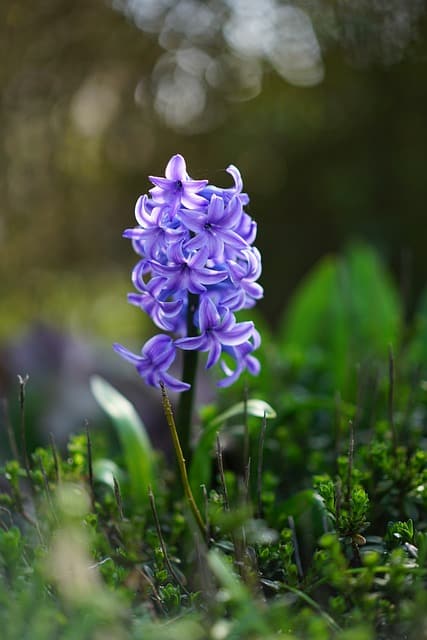
Hyacinths are renowned for their lush blooms and intoxicating fragrance, making them a favorite among winter gardeners. Like other fall bulbs, hyacinths can be forced to bloom indoors, providing a vibrant splash of color in the colder months. After chilling the bulbs for about ten weeks in a cool, dark place, they can be planted in a pot with well-drained soil and brought into a sunny area. The resulting flowers appear in dense clusters and can achieve a range of colors, from deep violet to striking blue, pink, and white. Hyacinths thrive with moderate watering and enjoy bright light to promote the best blooms. Their strong scent makes them a popular choice for table centerpieces and winter displays, allowing everyone to enjoy their delicate beauty and delightful aroma during the otherwise quiet winter months.
Crocus

Crocus, among the earliest bloomers of spring, can also grace gardens and landscapes during late winter and early spring. Crocus bulbs are hardy and can be planted in the fall or even early winter in milder regions, allowing them to emerge as soon as conditions permit. Their delicate, cup-shaped flowers, which come in a kaleidoscope of colors, including purple, yellow, and white, often burst forth even through a light snowfall. Crocus plants thrive best in well-drained soil and prefer sunny or partially shaded locations. Their cheerful blooms not only attract pollinators emerging from hibernation but also serve as a gentle reminder of the resilience of nature. In addition to being delightful in garden beds, crocus can also be effectively used in containers, bringing a pop of color to patios and porches during the colder months.
Grape Hyacinth
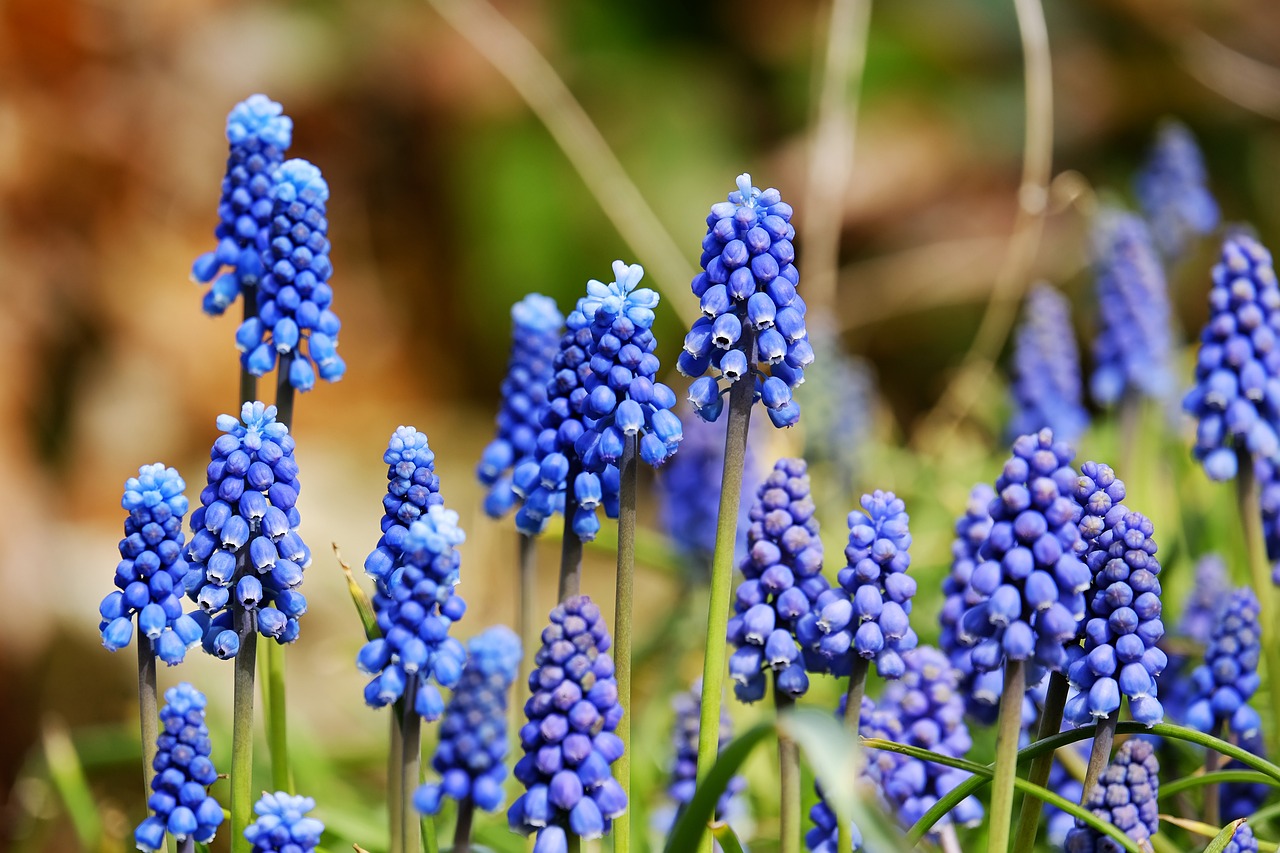
Grape hyacinth (Muscari spp.) presents another delightful addition to the winter and spring garden palette. Despite their name, these plants’ blossoms are small clusters resembling tiny grapes, typically in shades of blue, purple, or white. Grape hyacinths are hardy bulbs that can easily be forced to bloom, similar to other bulb varieties. By planting the bulbs in well-drained soil and providing appropriate chilling, they can yield clusters of charming flowers that stand out for their richness in color and unique shape. Grape hyacinths bloom abundantly and can create a striking carpet of color when planted in groups. Not only do they offer a beautiful aesthetic, but these bulbs are also drought-resistant, making them a low-maintenance choice for Northern gardens and perfect for naturalizing in grassy areas and meadows.


